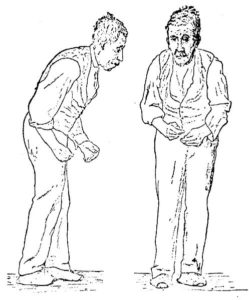
Previously, we discussed the medical facts associated with Parkinson’s Disease and since 7 to 10 million people currently have this illness, it would be appropriate to pay attention to the misconceptions that are abundant in the social circles and beyond.
Only then can there be more consideration to assisting those who are inflicted.
The following are a few of these faulty facts:
-
Parkinson’s is an Old Age Disease
It is generally believed that Parkinson’s is a disorder that afflicts the elderly because of their weakened systems or poor health. It is generally believed that anyone who is 60 or above is at risk of developing this disease.
Parkinson’s is not just an old age disease. Many people are diagnosed with it when they are only in their 40’s. In some cases, people can also be in their late 30’s when they are diagnosed with it, known as YOPD – young on-set of Parkinson’s disease.
The main reason why people believe it is an old age disease is that the average age for the diagnosis is 60. Similarly, many doctors also believed in this misconception which often results in misdiagnosis of young-onset of Parkinson’s disease. Luckily, more doctors now understand that age is not a factor with this disorder.
-
It Starts with a Tremor
Parkinson’s is widely known to be a neurological disorder that impacts motor functions. This is why people usually look at getting a tremor as the first sign of it. In fact, it is considered to be one of the most well-known signs of Parkinson’s.
During the early stages of Parkinson’s, a person might experience slurred or soft speech as well as lose facial expressions. The following are some signs of Parkinson’s disorder, apart from having a tremor:
- Muscle Rigidness – Stiff muscles can cause pain or make certain actions difficult. These can occur anywhere on the body.
- Impaired Balance and Posture – It might be difficult for someone to maintain their balance even when standing still. Their posture will also be greatly stooped. They might also face difficulties in standing up from a sitting position.
- Loss of Unconscious Movements – Unconscious movements include blinking, smiling or even swinging your arms while walking. A person might have decreased functions in this aspect. They will also have to consciously make an effort to make these actions.
- Change in Reflexes – Reflex actions might also become slower in a person. Apart from their reflexes, they might find it difficult to perform functions such as being able to write, knit or draw and more.
- Depression or Moodiness – A person can experience major mood swings and depression when they have undiagnosed Parkinson’s. This leads to a lot of confusion, hurt and shame that they are unable to perform regular functions with ease. Depression can worsen Parkinson’s, making a person more prone to indulge in unhealthy behavior that allows the disease to progress faster.
- Constipation or Urinary Incontinence – Bodily functions might also become out of order with a person needing to urinate more frequently. Similarly, they might experience constipation for a large number of days.
-
Diagnosis is Not Easy
Diagnosis of Parkinson’s disease is not easy at all and can take a lot of time. Extensive tests need to be completed and no two Parkinson’s disorder cases are the same. An individual might also experience Parkinson’s in a different manner which means that they won’t experience the same symptoms as someone else. In many cases, while the tremor might be the first symptom, others might not show tremors until years later.
Similarly, for some, slowness in walking as well as difficulty in expressing emotions might be the first symptoms whereas, for others, it might not be the case. For this reason, a person can’t be said to be a patient of Parkinson’s based on symptom comparisons alone. It is always best to go to a doctor to get the symptoms examined and have proper tests run on you.
Doctors also have to run careful tests to discount other conditions that could be responsible for causing the decline in motor skills. After a process of careful elimination, they can then diagnose the patient with Parkinson’s. For some patients, this can mean that they get properly diagnosed four years after they start showing the symptoms.
-
It’s Hereditary?
Parkinson’s disorder is not hereditary unless you have family members who have this affliction. Even then, the odds of you developing it are low. If you have a family history of the disease with multiple family members who have or had it, then you might have an increased chance of inheriting the condition. However, unlike other disorders, this isn’t limited to a person’s genes.
On the other hand, just because you have Parkinson’s doesn’t mean that your life is over. Sure, there is no cure for the disorder but there is a medication that can make the condition easier to deal with. Similarly, it is better to keep indulging in healthy activities such as yoga, going on walks, spending time with loved ones and more. You don’t have to put your life on hold just because you have this disorder. Another thing you should opt to do is sign up for a support group.
Parkinson’s can be very hard to deal with and each day, you can experience certain symptoms that might make you feel like you have taken two steps forward and ten steps back. With a strong support system, you can easily ensure that you don’t get depressed, especially on days when your symptoms are extremely bad.
